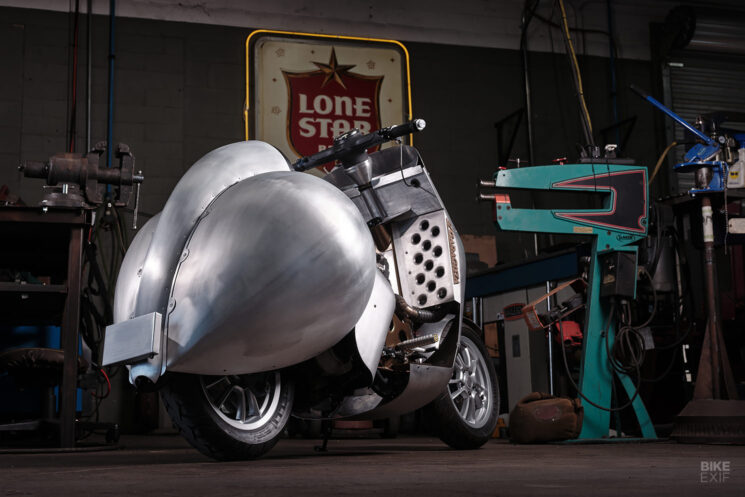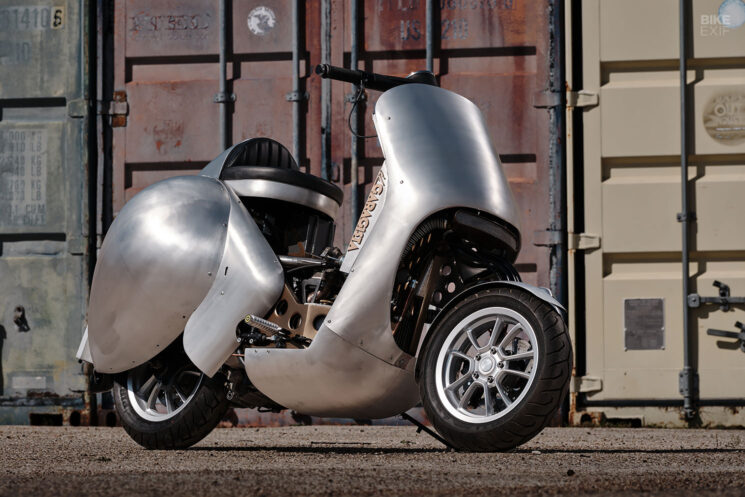
We have a particular affinity for modern Vespa scooters around here. Our founding editor, Chris Hunter, used to commute on one in Sydney, I used to commute on one in Cape Town, and our good friend, Winston Yeh, bops around Taipei on his (a black one, naturally). But we wouldn’t have the first clue on how to customize a modern Vespa.
They’re cute enough as they are, begging to be lightly accessorized rather than heavily modified. It takes a lot of imagination to look past the iconic bodywork and see something radically different. Luckily, Adam Eldridge has imagination in spades.
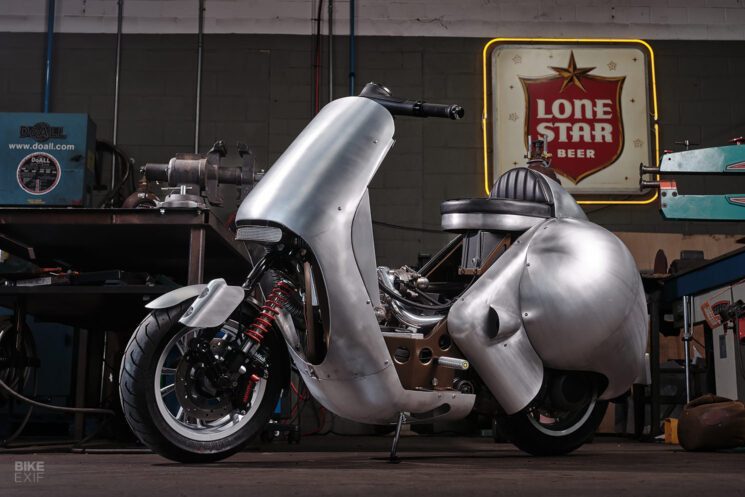
Based in Austin, Texas, Adam’s a fabricator who’s spent the last two decades honing his craft. Working under the banner of Python Lair Designs, he’s built custom bicycles, choppers, and hot rods, and has even tackled interior architectural metalwork.
The commission for the Vespa came from Guido DeVita—an enigmatic 70-something-year-old petrolhead with an equal love for cars and bikes, and zero regard for convention. Adam’s done regular work for Guido’s business, ilGaragista, and describes it as “a custom shop with no boundaries other than a checkbook.”
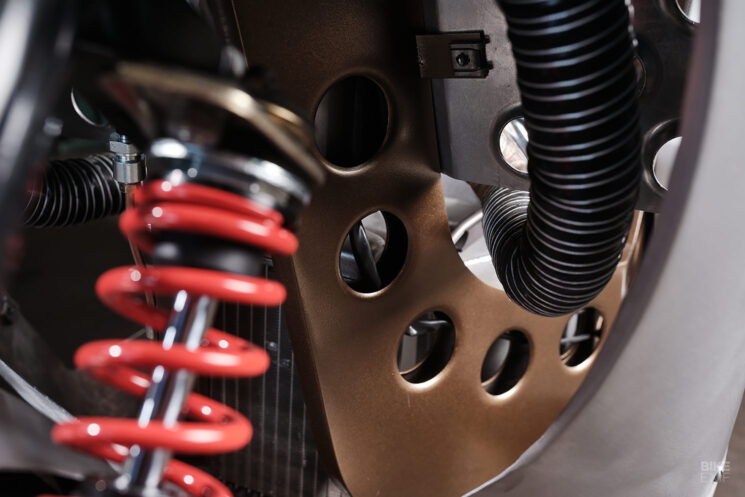
Thanks to their rapport, Adam had free rein to go wild on the 2003-model Vespa GT 200. So he went all-in, tearing the Vespa GT 200 down until all that remained was its engine housing, front fork, and wheels. But first, he measured every inch of the stock bike, imported those measurements into the 3D design software SolidWorks, and designed a new chassis.
Once the new frame was fabricated, Adam began shaping the Vespa’s new bodywork from sheets of aluminum. The scooter’s shell comprises four pieces on the inside and five on the outside, with a special skeletal structure supporting the rear section of the body. Each piece was made by hand using an English wheel, a planishing hammer, nylon hammers, a sandbag, and a TIG welded.
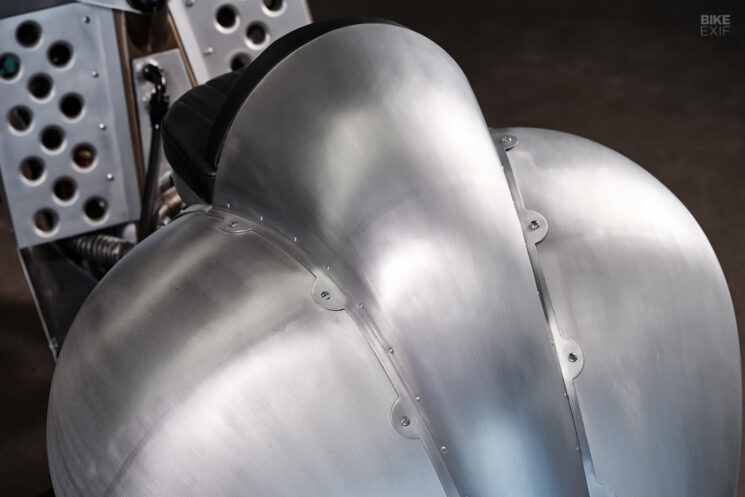
The design draws on a smorgasbord of references, resulting in a delightful aesthetic that’s part art deco and part retro sci-fi. Hints of vintage aeronautical design come from Piaggio’s legacy as an airplane maker, with classic automobile touches born from Adam’s fascination with racing cars.
“The concept of repurposing surplus has always fascinated me,” says Adam. “I’ve long admired Bill Burke’s P-51 Belly Tank—a 165-gallon P-51 Mustang wing tank, repurposed to achieve speeds of up to 131 mph at El Mirage. Ideas have always swirled in my mind, particularly about fabricating a car for the lake bed—a pursuit driven by a clear, numerical goal. Some of these ideas found expression in the Vespa.”
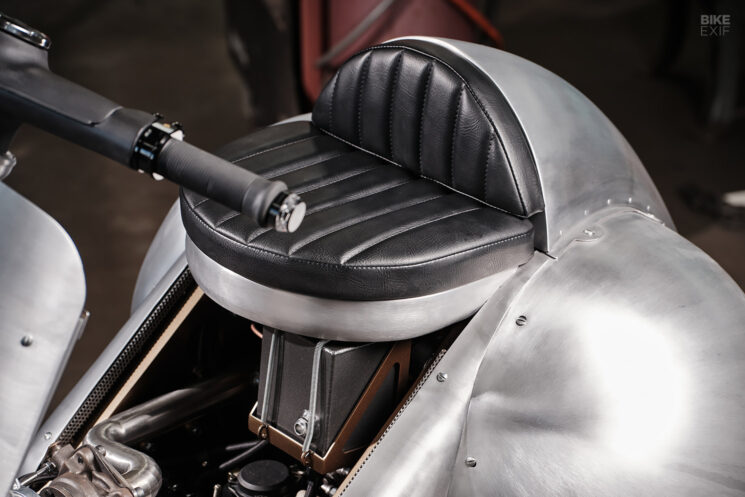
Adam cites one more influence for his Vespa build—the PTG Racing BMW E36 M3 race cars of the mid-90s. “My father and I made several visits to Road Atlanta,” he recalls, “where I found myself captivated by PTG’s E36 M3s, particularly the #6 Yokohama car. I vividly recall filling my disposable 35 mm camera with photos of that car on those weekends at the track.”
Visually, Adam’s Vespa has little in common with the (admittedly awesome) PTG BMW. But as soon as you get closer, the connection becomes clear.
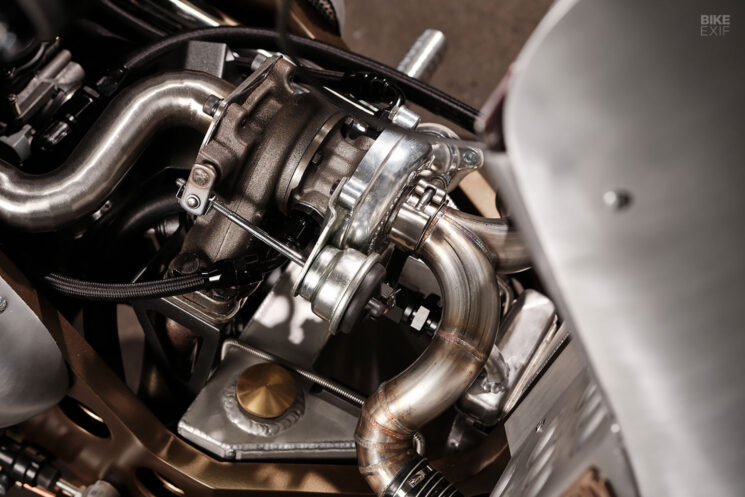
While the Vespa is all style on the outside, it’s all performance under the hood (as much as a 198 cc scooter can be, at least). Climb aboard and look directly down, and you’ll be faced with a bespoke turbo setup.
“Engineering the turbo mounting and piping presented its challenges,” Adam tells us, “particularly in integrating them with the drive unit, which functions as a unified subassembly. The use of aircraft hoses for the turbo intake was necessary to compensate for the vertical movement of the suspension in the rear. Careful consideration was given to the design of all lines connecting major systems to the engine, ensuring they could move in tandem with the drive unit.”
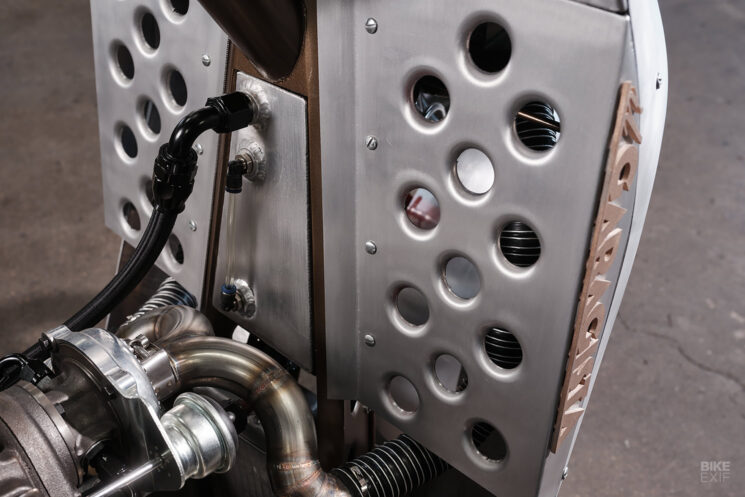
Adam also included a low-PSI regulator, a lift pump, and a new ECU. There’s a lot going on between the rider’s feet, including a custom-made fuel reservoir, a battery tray hiding under the seat, and substantial mods to the Vespa’s liquid cooling system; none of these are off-the-shelf solutions.
Next, Adam threw a few running gear updates into the mix to match the increased output. Frando brake calipers do duty at both ends, along with new Bitubo shocks and Pirelli Diablo Scooter tires.

The cockpit features a set of heavily modified vintage Piaggio handlebars. The switches are from Motogadget, and the stylish speedo is a lucky Amazon find. Both have been integrated into the handlebar housing through more judicious metalwork.
New grips, and Motogadget bar-end turn signals, round out the package. The brakes are linked, and operated via a custom-made foot pedal, negating the need for any levers on the bars.
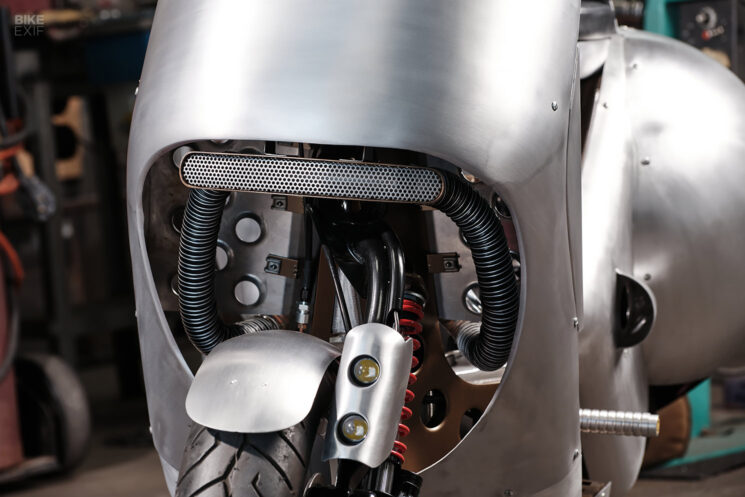
Equal parts art and engineering, Adam’s rework of the modern Vespa makes it a worthy addition to ilGaragista’s ever-expanding collection. We’re sure this isn’t the last time these creative minds will collaborate—but we’re not sure how they’ll top this.
Python Lair Designs | Instagram | Images by John Jackson, shot at Austin Speed Shop
